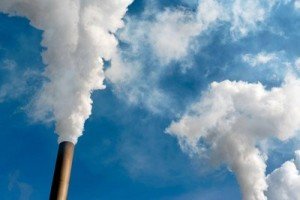The Government’s emissions trading legislation – the Clean Energy Future package – was passed the Australian Lower House of Representatives by 74 votes to 72 after weeks of debate.
 Although the legislation still has to be approved by the senate, the majority held by the current Government and the Green party in the senate suggest that the bill will passed into law.
Although the legislation still has to be approved by the senate, the majority held by the current Government and the Green party in the senate suggest that the bill will passed into law.
The comments below were collected by our friends at the Australian Science Media Centre. To contact a local expert on emissions trading schemes, please contact the NZ SMC (smc@sciencemediacentre.co.nz; 04 499 5476).
Professor John Cole is Director of the Australian Centre for Sustainable Business and Development at The University of Southern Queensland
“Political hype aside, today Australia took a once in a generation step forward as a progressive member of the international community. Climate change unchecked ranks as the greatest threat to the future of humanity and today Australia began to pull its weight consistent with its capacities. Admittedly, there is a long way to go in the transition to a low carbon world. Irrespective of what politicians may say and threaten to do with the carbon tax, the suite of measures is so complex, so embracing, and has been achieved with so much political capital spent – on all sides – that to talk about a future where we will go back to the past is simply to strain the bounds of credulity.”
Professor Snow Barlow is Professor of Horticulture and Viticulture at the Melbourne School of Land and Environment at the University of Melbourne
“The passing of the carbon bills through the House of Representatives today is an historic moment for Australians because it is the most significant move the nation has yet made to address Anthropogenic Climate Change. It will restructure the economy to dramatically decrease its carbon intensity and position current and future generations for continued prosperity. The bills cover the major sources of fossil fuel emissions within our economy, energy generation and transport.
“Perhaps more importantly, the well-conceived architecture of these carbon pricing bills gives government the capacity to meet current and future national and international emissions reduction targets while encouraging the development of less carbon intensive industries.
“Contrary to much of the public debate we are not ‘going it alone’. We are in the very good company of many of our major trading partners such as China, Korea, the nation state of California and the EU, who are concurrently introducing measures to decrease the carbon intensity of their economies. This well-structured carbon pricing package, competently implemented, has an excellent chance of achieving its objectives of controlling emissions, promoting low carbon innovation and ensuring that disadvantaged sectors of the community and industry do not suffer unfairly.
“Within my particular area of expertise in the land-based sector, the package provides a much needed research, development and demonstration program. This will equip land managers to generate carbon credits by decreasing the carbon intensity of their activities while maintaining productivity and improving sustainability. Although agriculture is not a covered sector in the first phase of pricing carbon, the income flows will allow the sector to reconfigure the landscape into a more sustainable design while preparing our food production industries to remain competitive internationally in a future carbon-constrained world.”
Prof John Foster is Director of the UQ Energy Economics and Management Group at The University of Queensland
“It is NOT a ‘carbon tax’!! It is an emissions trading scheme with a temporary fixed price period (all such schemes have a temporary period where there is a fixed price as the system beds down).
“I really despair when even science journalists are completely incapable of being clear on this and, in so doing just confuse the public, many of whom still think that they will see a carbon tax charge on their receipts, just like the GST.”
Professor Steven Sherwood is co-Director of the Climate Change Research Centre at the University of New South Wales
“This policy is only the first step compared to what will be needed in the years ahead to avert severe global warming. That will ultimately require leaving a lot of economically viable coal, shale oil, and other resources in the ground forever, or else capturing the carbon as they are burned — not just burning through them all a bit more slowly. The policy passed today seems to be as large a step as can be justified now; people will have to adjust to it, other nations will have to take further steps, and the consequences will have to be assessed. Then in a few more years, as we begin to adjust to new realities and learn from this experiment, we and the rest of the world will have to decide what stronger steps should follow it. We are in for a very long haul on this issue.”
Dr Richard Corkish is Head of the School of Photovoltaic and Renewable Energy Engineering at The University of New South Wales
“The advent of the emissions trading scheme and the associated support for clean energy developments in the coming years is very exciting. It will bring this issue of global warming back to its rightful place as the most important facing our generation and bring to prominence Australia’s special place in the world as an R&D leader in renewable energy technology. It will encourage us to discuss our special advantages that allow us to be one of the few developed countries that could very easily be 100% reliant on renewable energy. This is a very positive step!”